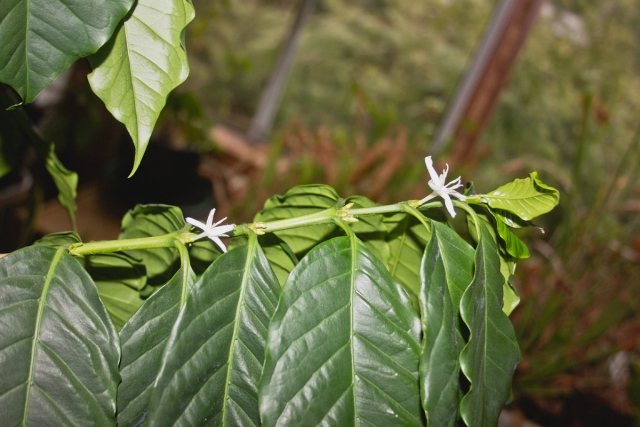GARDEN WISDOM: An Abstract Testimonial
I have written frequently about the results I get in my veggie beds from using the All Purpose Complete Organic 4-4-4 Fertilizer from Gaia Green. I love this product, and I use it with nearly all my vegetable plantings. The idea of a “complete” organic balanced fertilizer has been around for many moons – at least since Steve Solomon’s first edition of Growing Vegetables West of the Cascades, published back in 1981, and probably long before that. Steve’s recipe for homemade fertilizer was adopted, and later adapted, by Mary Ballon, who founded West Coast Seeds. The ratios vary, but the contents remain fairly similar – a blend of organic matter, seed meal, and minerals from various sources.
The Gaia Green 4-4-4 mix is composed of alfalfa meal, blood meal, bone meal, glacial rock dust, mined potassium sulphate, fossilized carbon complex, rock phosphate, greensand, kelp meal, and gypsum. An intrepid gardener could accumulate for herself all of these ingredients and mix their own fertilizer, but many of these are only available in 50 lb bags, so for my money the premixed does the job. And what a job!
It may be hard to gauge the relative success or failure of a fertilizer to do its job in the vegetable garden. What I would say is that I always get good results with the 4-4-4. Perhaps it is the even balance of nitrogen, phosphorus, and potassium that gives such good results.
Here’s an example. I have owned a coffee plant for over 20 years. It’s a great houseplant – not demanding, doesn’t need a lot of light… It droops a little when it’s thirsty, and perks up when it gets water. Once every three or four years, I saw through its main trunk and it sends up a bunch of new stems. Last August I was near the plant and happened to also be near an open bag of the 4-4-4, so I scooped a handful onto the surface of the coffee plant’s soil. By mid-September the plant went into bloom for the first time ever! Masses of discreet, but highly fragrant white flowers began to appear where the leaves meet the branches.
And then, over winter, lo and behold, berries began to follow the flowers, green at first, and then turning a rich deep red colour. In each ripening berry are two coffee beans with their flat sides pressed “back to back.” They pop out when the berry is squeezed, and have a thick slimy coating of fruit. This can be largely removed by rinsing them under a tap in a sieve. Since it first began to produce berries, I have harvested about 3 cups of finished, dry coffee beans from the one plant. When the berries first started to appear, we joked about brewing the world’s smallest cup of coffee, but now it’s looking like we might end up with enough to roast for real.
At the end of the day, it was the addition of the balanced organic fertilizer that released to the plant the nutrients necessary for flowering and seed production. The top of the plant is also looking more robust than ever before. This is one you can try at home. Just add a small handful of the product to the surface of your houseplant’s soil, and as you water, it will wash in. You will see positive results.
One very common question we hear in the early summer is from gardeners who ended up with big, bushy beet or carrot plants with little or no root growth. The immediate question is, “Did you apply manure or Sea Soil to the garden this spring?” Invariably, the answer is yes. These products increase the nitrogen (N) disproportionately to the phosphorus (P) and potassium (K) in the N-P-K ratio. Nitrogen is great for leafy greens and foliar growth, but once the ratio is out of balance, you can expect to see odd results.
Phosphorus is used by plants during cell division and growth, so they need more of it when they are young. It is important for good root development, disease resistance, and respiration. Later in the plant’s life, phosphorus is transferred from the roots to the developing seeds. Potassium plays a central role in photosynthesis, as well as the production of proteins and controlling enzyme activity. It is also needed for strong root development, so it’s recommended for root crops. In a closed, controlled hydroponic environment, growers can control the N-P-K ratio, as well as the supply of micronutrients, in order to give plants what they are looking for at different growth stages. But in the garden, it’s far simpler just to provide a balanced supply of everything all at once. In my experience, the plants will sort out when they need to draw from the various ingredients.
So there you are. A roundabout and overlong endorsement of a product I truly love. If you haven’t tried using it, I think you should. For goodness sake, let’s say goodbye to chemical fertilizers once and for all.
— originally published at Garden Wisdom






















